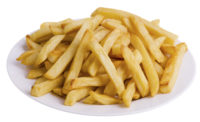The global passive temperature-controlled packaging market is estimated to be worth over $18 billion by 2027, according to a report released by Future Market Insights, Valley Cottage, N.Y.
The adoption of temperature-controlled packaging systems depends largely on the aspect that mechanical issues and external forces do not inhibit the packaging efficiency.
On the surface, the growing consolidation of companies partaking in the cold chain and cold storage businesses worldwide is pegged to drive demand for passive temperature-controlled packaging solutions. With a unification of the global cold chain network, the infrastructure in developed and developing markets will be equally harmonized for the adoption of passive temperature-controlled packaging. In addition, passive temperature-controlled packaging systems are identified for holding temperatures tighter than active passive temperature-controlled packaging.
Reusability of passive temperature-controlled packaging solutions is also a key driver for growing demand. Certain configurations in passive temperature-controlled packaging systems can exhibit reverse logistics capabilities, and suppliers can re-use the packaging solutions for product returns and redistribution. Other key drivers of growth include the ability of passive temperature-controlled packaging technology to provide shipments anywhere with year-round usability.
According to the report, the global market for passive temperature-controlled packaging will expand at a CAGR of 9% during the forecast period.
- In 2017, the sales of insulated containers in the global passive temperature-controlled packaging market raked in over $4.3 billion revenues. Throughout the forecast period, insulated containers are projected to remain top-selling products in the global market.
- The food and beverage industry is anticipated to be the largest end-user of passive temperature-controlled packaging in the world. During the forecast period, global revenues procured from the end-use of passive temperature-controlled packaging in food and beverages industries will expand at a CAGR of 8.6%.
- Chilled applications of these systems are anticipated to gain traction, and will witness high traction in European regions, where supply chain partners are pushed to offer effective packaging for perishable pharmaceuticals.



